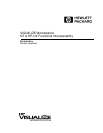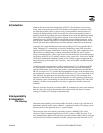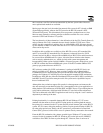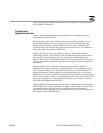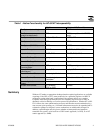
02/04/00 HP VISUALIZE WORKSTATIONS 4
Table 1 : Native Functionality for HP-UX/NT Interoperability
HP-UX Windows NT (Rev. 4.0)
File System (networking) NFS SMB
File System
(enterprise/distributed)
DFS DFS (compatible with NT DFS
only)
File System (disk) HFS, VxFS, LIF NTFS, FAT
File System (miscellaneous) FAT FAT
File System (CD-ROM) CDFS CDFS
Network Transport TCP/IP TCP/IP, NetBEUI, NWLink
Network Addressing DHCP, DNS DHCP, DNS, WINS
Remote File Copy Clients ftp, rcp ftp, rcp
Remote File Copy Services ftpd rcpd ftpd
Remote Application
Communication
DCE, rexec, remsh DCE (rpc only), rexec, rsh
Remote Printing
(client/server)
rlp/lpd, DLC rlp/lpd, DLC
Remote Terminal Clients telnet, rlogin, X windows telnet
Remote Terminal Servers Telnetd, rlogind,
X windows
Telnetd available in Resource Kit
Remote Application
Display
X windows
Window Environment X11 windows
(CDE or VUE)
WIN32
Summary
Windows NT makes an appropriate desktop when the required applications are available
or perhaps, if the GUI on NT is more productive for a particular engineer. An HP-UX
workstation, on the other hand, is appropriate if the engineer utilizes very complex
Computer Aided Design and Analysis tools for extremely large data sets or relies on
absolutely critical availability or even fast process I/O performance. Whether NT or HP-
UX is chosen, the same administration processes and functions must be maintained (e.g.
user accounts, print spooling, etc.). Network infrastructure must also be expanded and re-
evaluated or perhaps re-designed, as new workstations are added and/or changed. In
addition, careful thought must be given to whether an interoperable and enterprise
extensible file system is to be based on a UNIX-centric approach (i.e. DFS), or an NT
centric approach (i.e. SMB).



